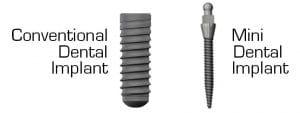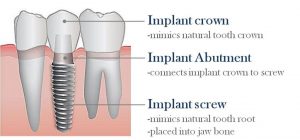Dr. Daniel Ho is a board-certified periodontist, and a Diplomate of the American Board of Periodontology. Dr. Ho received his Doctor of Dental Medicine (DMD) degree from McGill University, in Canada. He went on to specialize in periodontics and implant dentistry, and received his Specialty Certificate in Periodontics and Doctor of Medical Science (DMSc) degree at Harvard School of Dental Medicine.
Dr. Ho has about 10 years of clinical experiences in periodontics and implant dentistry. He specializes in the treatment of gum disease, and provides care in implant dentistry, laser gum surgery, esthetic gum grafting, and oral bone grafting.
Over the past years, Dr. Ho has written several textbook chapters in Clinical Maxillary Sinus Elevation Surgery, Clinical Cases in Periodontics, and Clinical Cases in Implant Dentistry. He has been actively involved in clinical dental implant and periodontal research, and has published many scientific studies in peer-reviewed dental journals. Additionally, Dr. Ho has received many awards, including two prestigious awards given by Harvard School of Dental Medicine – Henry D. Epstein Award and Joseph L. Henry Award – the Canadian Institutes of Health Research (CIHR) research fellowship, the Dr. Andre Charest Prize awarded by Quebec Association of Oral & Maxillofacial Surgeons, the Sunstar GUM Award in Dentistry, and the International College of Dentists Prize. He is a finalist in Richard J. Lazzara Fellowship in Advance Implant Surgery, offered by American Academy of Periodontology.
As a Clinical Assistant Professor in The Department of Periodontics at The University of Texas School of Dentistry at Houston, Dr. Ho has taught many dental students and specialty residents over the past years. He has given many lectures ,and supervised residents in their periodontal and dental implant surgeries. Moreover, Dr. Ho also provides continuing education courses to general dentists in the area of implant dentistry and periodontics. He is very passionate about his work, and strives to respect, care about, and educate his patients in their periodontal and dental implant health.
Dr. Ho is happily married to his wife Rachel, and has a daughter Mirabel. When he is not working, Dr. Ho enjoys acrylic painting, hiking, traveling, and visiting ancient ruins in different parts of the world. He also likes photography!
 Dental implant :
Dental implant :
A dental implant is a screw that is surgically inserted in the jaw bone to replace lost tooth roots. After a period of time, the bone and gums will fuse around the screws, thereby creating a stable base for implant restorations. Osseointegration refers to the process through which implant screw is intimately integrated to the jaw bone.
A dental implant is made of 3 parts:
- implant screw – made of titanium or zirconia and is placed into the jaw bone
- implant abutment – connects implant screw to implant crown
- implant crown – mimics the natural tooth’s crown
What are the different types of dental implants?
 Dental implants are made of titanium or zirconia that is very well-tolerated and highly bio-compatible with the human body. It is extremely seldom for an individual to develop rejection to titanium or zirconia dental implants. The main advantage of zirconia implants is its white color which may be important in implant esthetics. Dr. Daniel Ho and Dr. Mack Coker place dental implants developed by the most reputable companies in the world to provide patients with excellent quality care.
Dental implants are made of titanium or zirconia that is very well-tolerated and highly bio-compatible with the human body. It is extremely seldom for an individual to develop rejection to titanium or zirconia dental implants. The main advantage of zirconia implants is its white color which may be important in implant esthetics. Dr. Daniel Ho and Dr. Mack Coker place dental implants developed by the most reputable companies in the world to provide patients with excellent quality care.
There are mainly two types of dental implants when categorized by their diameter:
- Conventional Dental Implant: These implants have diameters ranging from 3mm to 7mm.
- Mini-Dental Implant: These implants have diameters ranging from 1.5mm to 2.8mm. Mini-implants are particularly useful in situations when there is very limited amount of space available to place a conventional dental implant. Most common sites for mini-implants are upper lateral incisors and lower central and lateral incisors. In addition, in patients with severely atrophic jaw bone requiring implant overdentures, mini-implants can be placed at those sites to support the dentures.
What are different ways of placing a dental implant?
There are two ways by which a dental implant (implant screw) can be inserted into the jaw bone – flap or flapless approach. In flap approach, implant is placed after the gums are peeled away from the jaw bone. In flapless approach, gums are not peeled away when implant is placed. The advantage of the flap approach is that clinicians will have better understanding of what the actual bony architecture looks like. The advantage of a flapless procedure is that it is less invasive and sometimes soft tissue contour can be better optimized at the time of implant placement. Surgical placement of dental implant into the jaw bone can be done under local anesthesia.





 Dental implant :
Dental implant :